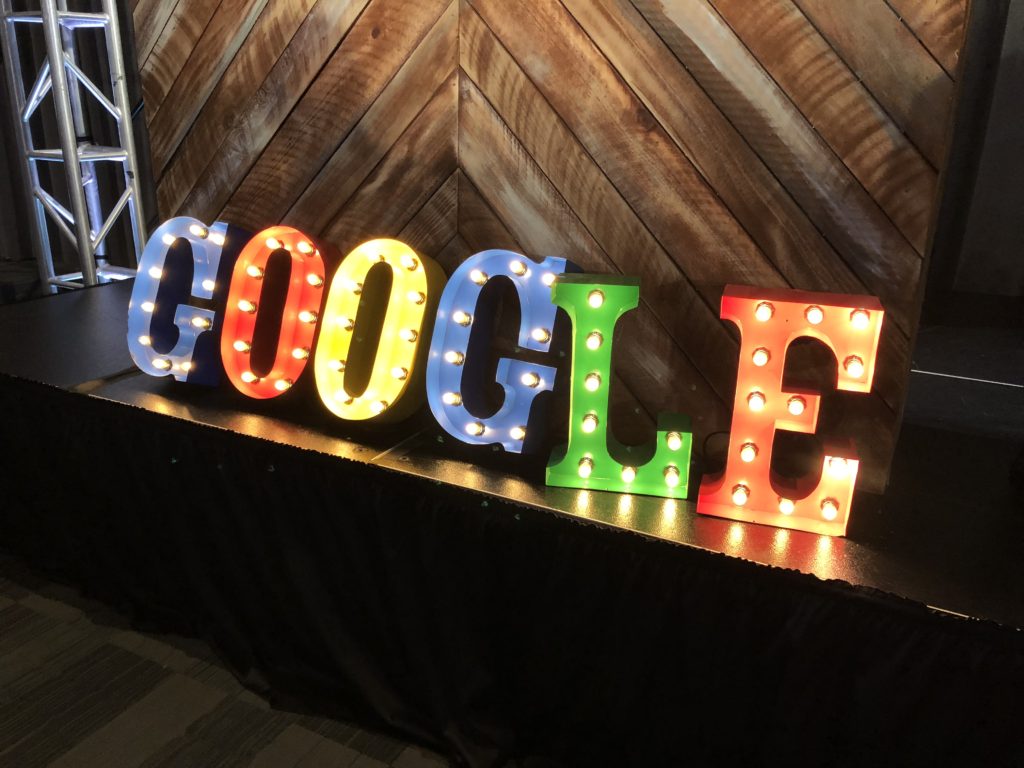What Online Advertisers Need to Know About Google’s Newly Announced Innovations & Developments
If you sell products and/or services online, then you’ll certainly want to keep current with the latest developments at Google pertaining to online marketing.
Here’s a recap of 7 of the most important takeaways from Google Marketing Live 2018, the annual invite-only event in which Google engineers, business leaders, and advertising experts announced the latest innovations and upcoming developments to their suite of marketing technologies, held last week at the San Jose McEnery Center.
1. Responsive Search Ads in Google Ads
Google is launching a major brand shift in its advertising products and services. The name change from Google AdWords to Google Ads is just a tip-of-iceberg signal of the deep changes to the way Google wants to run its advertising business going forward.
The main driver of these changes: machine learning.
Google is pushing hard on automated advertising options, creating new ways to structure your campaigns. With Responsive Search Ads, online advertisers will now be able to input up to 15 headlines with 4 product description lines, and Google will automatically mix and match the 3 best headlines and 2 best descriptions. No more manual A/B testing – Google will leverage the power of its machine learning and sophisticated algorithms for you.
Pro tip: to make the best use of Responsive Search Ads, try to make your headlines different, so that they each highlight distinct benefits, features, and product offers. Make sure each headline is relevant to keywords in your ad and include at least one keyword in the headline.
2. Cross-Device Reporting and Remarketing in Google Analytics
One of the biggest live reactions from the audience in San Jose was Google’s announcement that advertisers will now be able to see cross-device reporting in Google Analytics.
This is a game changer for online advertisers because it means you will now be able to build cross-device remarketing audiences that you can use in Google Ads. Now, you will be able to target your remarketing efforts based on comprehensive information about your customers across all their devices.
3. Mobile Landing Page Speed
According to Sridhar Ramaswamy, Senior Vice President of Ads at Google, there are twice as many people using smartphones today than there were 5 years ago. And more and more people are using their mobile devices to shop.
Google intends to help online advertisers optimize their campaign for mobile device shopping by creating a mobile landing page speed score. This score will be based on page speed and conversion rates and updated daily to help you ensure you are offering best-possible shopping experiences to your customers on smartphones.
4. Smart Campaigns for Local Businesses
As more customers are using their mobile devices to shop, they’re not only looking for ways to buy online, they’re also looking for nearby local businesses. According to Google, “near me” searches continue to increase.
With new location-targeted campaigns, advertisers will be able to create dedicated campaigns to drive in-store visits. Google will automatically optimize ad delivery across Maps, Search, YouTube and its other websites and apps based on a combination of customer queries and location information.
Google also has a new Smart Campaigns initiative targeted at small businesses. Recognizing that many small, local business is wary of investing in digital advertising, Google intends to make the first-and-hardest step easy by simplifying the process. Now you don’t even need a website, let alone a dedicated marketing team to advertise online. These new Smart Campaigns will be driven almost entirely by automation, from creation through delivery, based on the advertiser’s budget and goals.
5. YouTube Advertising – Maximize Lift
As video becomes an increasingly more popular medium, online advertisers will now be able to optimize delivery to customers on YouTube.
Google announced a new Smart Bidding strategy they call “Maximize Lift” that will help you to reach prospects who will search for your brand after watching a video. This strategy will use Google’s machine learning to automatically adjust your bids to maximize the impact of your video advertising.
6. Hotel Ads
If your business is a hotel, Google also announced a new feature just for you:
Google will be introducing a new integration across Maps and Search across all devices, making it possible for your customers to book right on Google. Easier for your customers, better for you.
7. The New Google Marketing Platform
The new Google Marketing Platform will finally bring together Google’s advertising and analytics services into one single solution. Now you will have a unified set of tools to help you plan, purchase, and optimize the online experiences of your visitors and customers.
Included in the new platform will be Display & Video 360, Search ads 360, Analytics 360, Data Studio, Optimize 360, Surveys 360, and Tag Manager 360.
With all these tools working together in conjunction with advances in Google’s machine learning, it will be easier than ever for advertisers to understand and respond to their customers.

Attendees of Google Marketing Live 2018 are intrigued by the possibilities the new changes can have for online advertisers.
Menachem Ani, the founder, and CEO of JXT Group, a Google Premier Partner, had this to say about the new announcements, “We’re very excited to try out the new automation features which will be offered by Google Ads. Automation and machine learning open up a whole new set of possibilities for advertisers.”

